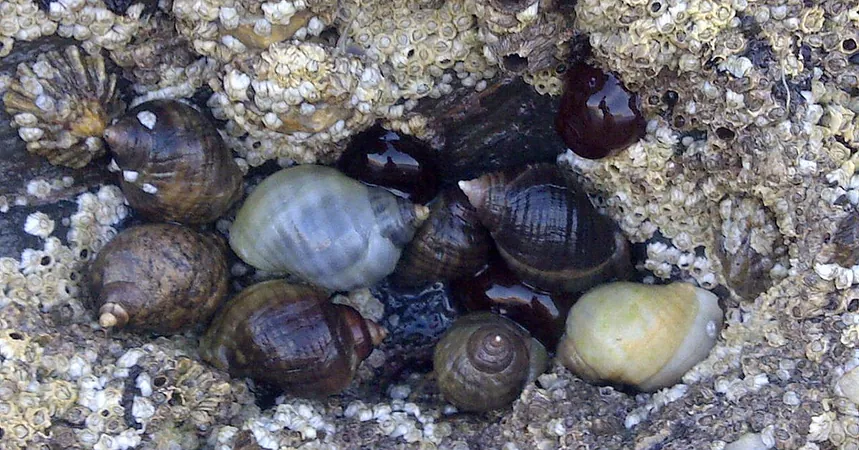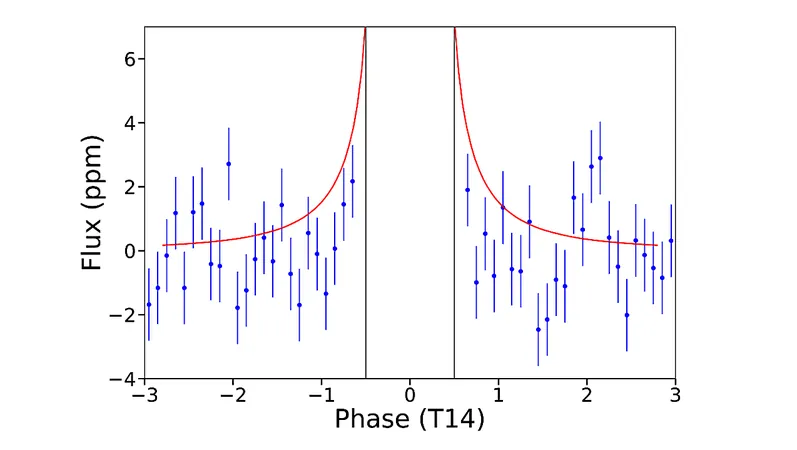
Witness Evolution in a Snail's Quick Transformation!
2024-10-24
Author: Arjun
Rapid Adaptation Observed in Marine Snails
In a remarkable case of rapid adaptation, researchers have observed significant changes in marine snail populations on a small rocky islet off the coast of Sweden over a mere 30 years. The story begins with a devastating toxic algal bloom that wiped out an entire population of snails in 1992. However, this event paved the way for an intriguing experiment: the reintroduction of a different ecotype of snails to the skerry.
Two Ecotypes: Crab and Wave Snails
The species in question exhibits multiple ecotypes, prominently categorized as 'crab' and 'wave' snails. Crab snails, which thrive in predator-rich environments, display larger bodies and thicker, unadorned shells with smaller openings. On the flip side, wave snails inhabit areas with fewer threats and consequently have smaller, patterned shells with larger openings.
The Transformation of Crab Snails
When researchers reintroduced crab ecotype snails to the predator-free skerry, they began documenting changes in this new population over the decades. Astonishingly, adaptations were noted within just a few generations. One scientist involved remarked on the predictability of the snails' transformation, stating, 'We were able to robustly predict what the snails will look like and which genetic regions will be implicated. The transformation was both rapid and dramatic.'
Pre-existing Genetic Variability
However, here's the twist: these changes did not result from a complete overhaul of snail DNA. The researchers clarified that the genetic diversity necessary for these adaptations already existed within the original crab snail population, albeit at low frequencies. This stored genetic variability was a key factor in facilitating this swift evolutionary response to a new environment, demonstrating that the remarkable adaptability of the snails was not a case of originating new traits but a selection of pre-existing genetic variations suited for survival in their transformed habitat.
Phenotypic Changes and Genetic Complexity
As time progressed, phenotypic changes such as shell shape adjustment were observed alongside individual gene variability leading to further adaptations. Additionally, 'chromosomal inversions' caused significant shifts in specific regions of the snails' DNA, highlighting the complexity of genetic changes without crossing species lines.
A Showcase of Natural Selection
This case serves as a prime example of natural selection in action. The marine snails remained true to their kind throughout these changes, showcasing the remarkable resilience and adaptability inherent in their genetic structure. If anything, the swift adaptations of the snails underline the clever design of nature, equipped with ample genetic variability to sustain life amidst ever-changing conditions.
Understanding Evolution: Snails Remain Snails
While many herald this observation as evolution, it emphasizes that snails are still snails—they have not transformed into a different kind of creature. In essence, they merely exhibited variations within their ecological framework thanks to pre-existing genetic pools.
Join the Discussion!
Join in on the excitement of these scientific findings and more, as discussions about the nature of adaptation and the complexities of creation continue to inspire inquiry and debate. Don’t miss out on the latest in science and culture news, presented with unique perspectives!


 Brasil (PT)
Brasil (PT)
 Canada (EN)
Canada (EN)
 Chile (ES)
Chile (ES)
 Česko (CS)
Česko (CS)
 대한민국 (KO)
대한민국 (KO)
 España (ES)
España (ES)
 France (FR)
France (FR)
 Hong Kong (EN)
Hong Kong (EN)
 Italia (IT)
Italia (IT)
 日本 (JA)
日本 (JA)
 Magyarország (HU)
Magyarország (HU)
 Norge (NO)
Norge (NO)
 Polska (PL)
Polska (PL)
 Schweiz (DE)
Schweiz (DE)
 Singapore (EN)
Singapore (EN)
 Sverige (SV)
Sverige (SV)
 Suomi (FI)
Suomi (FI)
 Türkiye (TR)
Türkiye (TR)
 الإمارات العربية المتحدة (AR)
الإمارات العربية المتحدة (AR)